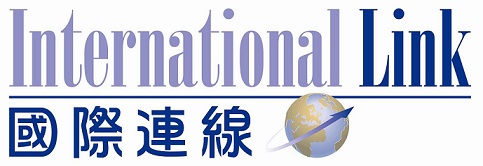二零一四年越南社會經濟表現
二零一四年越南社會經濟表現
SOCIO-ECONOMIC PERFORMANCE OF VIETNAM IN 2014
Part I
We have realized tasks set for 2014 against the global backdrop of profoundly complicated changes. The world economic recovery has been slower compared to previous forecast. Conflicts have occurred in many places around the globe. Tensions in the East China Sea and East Sea have arisen.
Domestically, macro-economy was basically stable and inflation was put under control. Economic growth has gradually recovered but business environment, productivity, efficiency, and economic competitiveness still remained low while the requirements for international integration become increasingly high. Demand for socio-economic development and national defense and security was enormous while the resources were limited. China’s brazen placement of its oil rig in Viet Nam’s waters regardless of international law seriously threatens the country’s peace, stability and socio-economic development.
Amidst huge challenges and difficulties, under the leadership of the Party Central Committee, the Government has deployed a string of drastic and comprehensive solutions to realize the tasks figured out in the 2014 plan in line with the National Assembly’s Resolution. Task review, evaluation, adjustment and supplementation have been conducted on a monthly basis.
Thanks to the joint efforts of the whole political system, compatriots and business community, our country continued gaining positive socio-economic progress. On the basis of the first-nine-month achievements and those estimated to obtain for the rest of the year, the Government would like to report on socio-economic situation in 2014 and tasks for 2015 as follows:

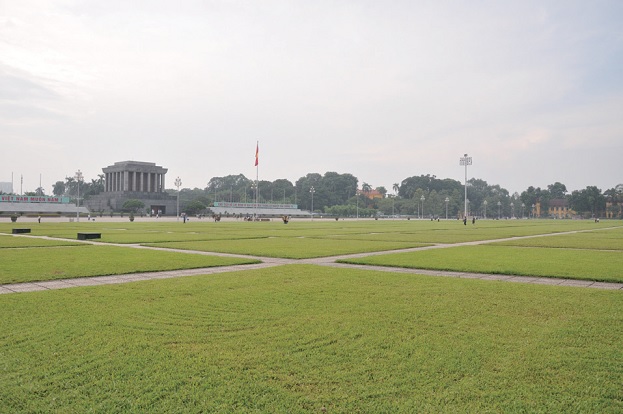
1. Macro-economy
Inflation was put under control and macro-economy was more stable. The consumer price index fell sharply, rising 2.25% in the nine-month period – the lowest rate over the past decade; the index is forecast to increase by less than 5% this year. Interest rates dropped by 2% compared to last year’s end. The first-nine-month credit growth was 7.26% compared with 6.87% of the same period last year and is expect to expand 12-14% as planned. Exchange rate and foreign currency market were stable; foreign reserve set new record. Confidence in the dong was restored.
Exports grew fairly high, with the revenue increasing 14.4% in the first nine months, of which local businesses’ export value augmented 13% (compared to 3% of the same period last year). Many export items soared (pepper up 41.5%, coffee up 31%, footwear up 24.5%, cashew up 23.7%, aquaculture 23.7%, machines-equipment-spare parts up 22.1%, garments up 19%, phones and electronic equipment up 11.3%). Imports surged 11.6%, mainly machines, equipment and materials. This year’s combined export and import values are estimated at US$148 billion and US$146.5 billion, up 12.1% and 11% respectively. Trade balance, current account, and balance of payment continued to run surpluses.
State budget revenue in the first nine months rose 17.2% against the same period last year and is expected to surpass the preset target of 10.6%. Budget spending was ensured as planned and in urgent emerging cases. Budget overspending was equal to 5.3% of the GDP. Public debt, Government debt, national foreign debt were still within the limits allowed by the National Assembly in its Resolution No. 10/2011/QH13.
Total investment capital in the first nine months climbed 10.3% against the same period last year and is estimated at 30.1% of the GDP. Non-State sectors’ investment capital was estimated to rise 12.8% in the first nine months and about 5.45% for the whole year. Disbursed FDI volume was estimated to reach US$8.9 billion, up 3.2% in the first nine months and US$12.5 billion, up 8.7% for the whole year. ODA disbursement went up 10% to US$4.1 billion in the first nine months and is estimated to increase 7.1% to US$5.5 billion this year. Investment capital sourced from budget and Government bonds was projected to increase 18.3%.
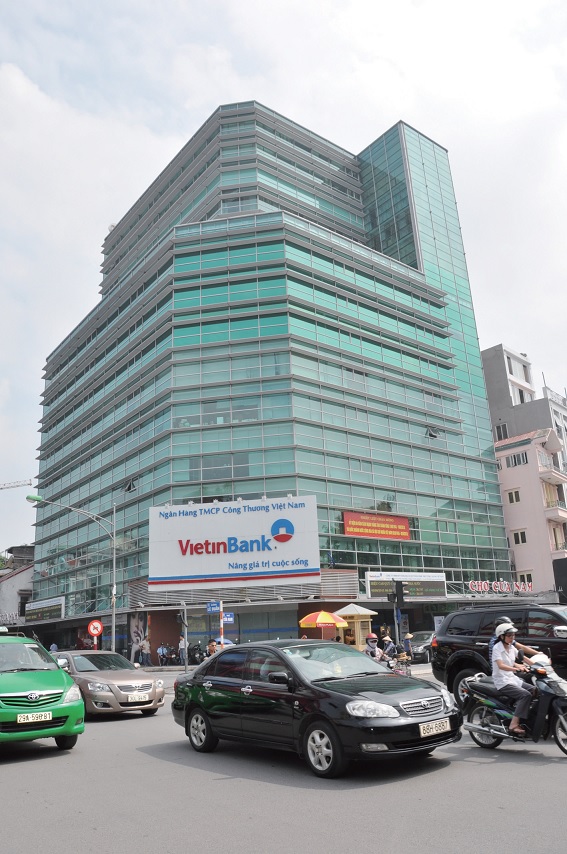
Market and price management was strengthened; milk prices for children under six dipped as much as 34% for several categories, bid prices for drugs fell down by 25-30% on average. The Government continued with the roadmap for market-oriented regulation of prices of petroleum, electricity, coal, clean water, education and healthcare services, etc along with subsidies for the poor and policy beneficiaries. Prevention and control of smuggling and trade fraud were spurred.
Macro-economy and major balances of the economy were not really stable. Budget overspending was high. Public debts rose quickly. The Government’s direct debt obligations accounted for 14.2% of the annual State budget revenue in 2014 (compared to the cap of 25% as stipulated in the Government’s public debt strategy), however the figure was estimated at 26.2% if borrowed money for loan rescheduling, payment and refunding were included. Total demand rose slowly. Credit growth remained weak in the first months of this year. Non-performing loans (NPLs) was high while NPLs settlement made little progress. Resource mobilization for development failed to meet requirements. The stock market development was not stable. The real estate market recovered slowly. The ratio of domestic sectors’ export value remained modest. The efficiency of market management, trade fraud and transfer pricing prevention was not high.
2. Economic growth and business environment
A series of measures were deployed to reform administrative procedures and business environment and improve competitiveness, especially in such areas like tax, customs, social insurance, credit, land, construction, business establishment and dissolution, investment procedures, electricity access among others. As a result, the business environment has been improved, domestic and foreign resources have been better mobilized and used for development. The volume of investment capital registered by newly-established businesses surged up 13.9%, additional investment per each business rocketed 24.6% on average; the number of businesses resuming production picked up 5.1%.
The economy kept on growing, with 5.09% in the first quarter, 5.25% in the second quarter, 6.10% in the third quarter and 5.62% between January and September, higher compared to the same periods of the two previous years, and is estimated to expand 5.8% for the whole year. Industrial production, agricultural production, and service sector expanded 6.7%, 3.5%, and nearly 6% respectively. Total retail sales of consumer goods and services augmented 11.1% (6.2% if price factors are deducted). The number of international arrivals soared 10.4% to 6 million in the first nine months and is estimated to increase to about 8 million this year.
The business environment and competitiveness have been slowly improved. Administrative procedures remained cumbersome. Businesses still faced difficulties, including credit access. Financial and governance capacity of the majority of local businesses remained limited. The number of dissolved/suspended businesses was high. The ratio of non-public sectors’ investment shrank.
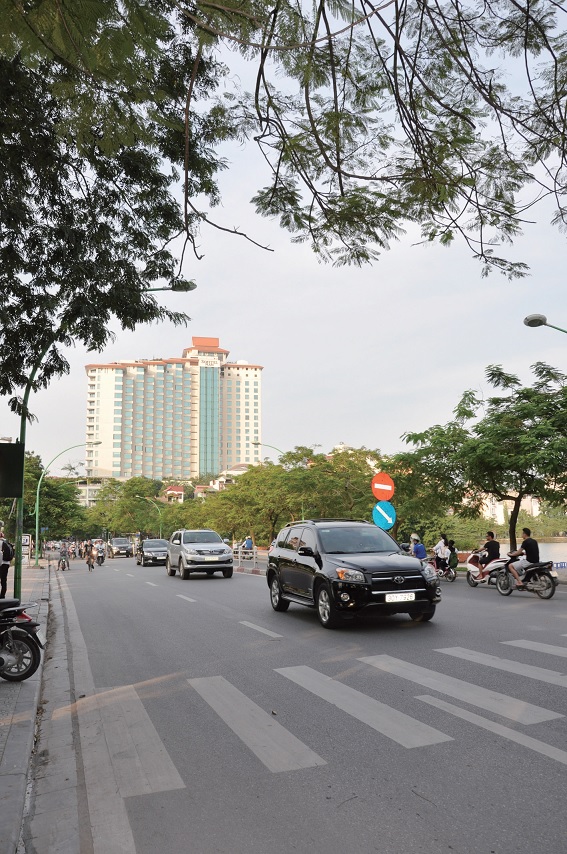
3. Economic restructuring
Generally, the economy has been restructured actively, focusing on strengthening management, improving institutions and policies, speeding up the restructuring of public investment, credit organizations, State-owned enterprises and agriculture in combination with the building of new-style rural areas.
The Government has submitted the draft Law on Public Investment to the National Assembly, renovated investment management on the basis of medium-term plans, steered capital to key projects to overcome scattered investment. Investment decisions were only issued on the basis of identifying clear capital sources and capital allocation capacity. Settlement of capital construction debts was strengthened and newly-groundbroken projects were closely monitored. Mechanisms and policies, especially those related to public-private partnership were further improved to lure non-public sectors’ investment.
The realization of the Project on restructuring credit organizations has been fostered. Weak joint-stock commercial banks have been basically restructured, the number of credit organizations reduced by seven ones, credit organizations’ financial capacity was enhanced and banking system safety was guaranteed. Some 53.6% of the total NPLs of credit organizations were reclaimed, restructured, and purchased by the Viet Nam Asset Management Company (VAMC).
A number of solutions for SOEs restructuring have been introduced, focusing on equitization, divestment, improvement of corporate governance and production efficiency, as well as the promulgation of new policies for facilitating equitization and divestment process. Over the past nine months, 71 SOEs were restructured compared to 74 in 2013, 200 for this year and the target of 432 for the 2014-2015 period, and the values of 123 SOEs were made public. Divestment volume was estimated at VND 3,500 billion or 3.6 times higher than that of 2013. Most of corporations and groups made profits, ensured State capital, and raised contributions to State budget. Restructuring agriculture and forestry companies has been under way in accordance with the Political Bureau’s Resolution.
Agricultural restructuring was beefed up in combination with the building of new-style rural areas. Policies were introduced to support plant structure shift, animal husbandry development, aquaculture farming, afforestation; encourage businesses’ investment in agriculture and rural development, application of scientific and technological advances, and agricultural mechanization. The models of large-scale rice fields, land concentration, production and business connectivity and cooperation were multiplied. The building of new-style rural areas reaped positive achievements with 790 communes satisfying 19 criteria (accounting for 8.8%).
Industrial structure moved positively with rising ratio of manufacturing and processing and falling rate of mineral exploitation. Many projects on electronics, energy, infrastructure development, etc have contributed to accelerating the industrial structure, exports, job creation and growth. Investment was expanded in potential service sectors like telecommunication, finance-banking, healthcare, transport, logistics, aviation, tourism and trade, etc.
Economic restructuring was sluggish. Productivity, quality and competitiveness remained low. Technological innovation pace failed to meet the requirements. High-tech and auxiliary industries developed slowly. The share of manufacturing and service in the GDP was lower compared to other regional countries. Domestic businesses have not deeply participated in the global production network and value chain. Preset targets were not achieved in restructuring agriculture. Public investment restructuring was slowly carried out [by some agencies and localities] and capital construction debts remained huge; foreign investment inflows in infrastructure development were still modest. Some weak credit organizations still existed. SOEs restructuring was not effectively carried out and the performance of many SOEs remained poor.
4. Strategic breakthroughs
The Plan for the realization of the 2013 Constitution, program on law and ordinance building, and National Assembly’s Resolution N0. 67/2013/QH13, have been actively deployed. The Government focused on promulgating legal documents on detailed implementation of laws, improving the socialist-oriented market economy institutions and promoting the citizens’ right to democracy.
Promulgation of guidance documents with improving quality was sped up. Due attention was paid to the enforcement of laws and resolutions approved by the National Assembly. The Regulations on monitoring the fulfillment of duties delegated by the Government and the Prime Minister were introduced.
The Government’s Resolution on improving the business environment and national competitiveness was implemented. Administrative reform was accelerated and brought about positive outcomes. Functions and obligations of ministries and agencies were redefined to basically overcome overlaps and weaknesses in State management. The Project on reforming public duty and civil servant regimes was deployed. Continue to modernize administrative system, enhance application of information technology, make public administrative reform and IT application indexes of ministries, agencies and localities. Beef up e-administration and national database development. Responsibility and efficiency of State apparatus have improved.
Actively realize Resolutions adopted by the Party Central Committee, laws and policies of the State regarding education and training reform and science and technology development. Human resources witnessed developments in terms of quantity and quality. Due attention was paid to improve the national education system, reform high school curricula, textbooks and final exams as well as college and university entrance exams. Review and correct education organization at tertiary establishments; expand the pilot model of progressive education. Special attention was paid to education and training development in disadvantaged areas and among ethnic minorities and policy beneficiaries. Specific mechanisms were deployed to train workforce for the Northwestern, Central Highlands, and Southwestern regions, speed up the development of lower secondary boarding schools and education for ethnic minorities. Implement the program on education universalization, illiteracy eradication, life-long study, and support the development of high-quality vocational schools. Step up international integration in education and training.
Continue the national programs on technology innovation, high-tech development, national product development, and transfer of globally advanced technology. National funds for scientific and technological development were put into operation with initial outcomes. Expand order-placement and contract mechanisms for scientific research tasks. Develop technology market and consultancy, assessment, and counter-argument services. Enhance protection of intellectual property.
Review, improve institutions and planning schemes for infrastructure system. Speed up the mobilization of resources and diversify investment models. Focus on site clearance, especially at key national projects. Accelerate the progress of many key and modern projects on transport, electricity, irrigation, urban infrastructure, information system, etc to serve socio-economic development and national defense and security.
Socialist-oriented market economy institutions have been slowly improved, thus failing to create a real breakthrough for socio-economic development. The outcomes of administration reform and legal system improvement were not as expected. Disciplines and rules were not strictly observed in somewhere. Inspection efficiency remained limited. Policies were not good enough to quickly develop and use high-quality workforce. The quality of tertiary education and vocational training was limited. The ratio of trained labor was not as high as expected. Application of science and technology was slow. Resources for infrastructure development remained modest, non-State resources were not mobilized effectively, corresponding capital for ODA and public-private partnership projects was insufficient. Traffic infrastructure network failed to meet multi-modal requirements. Logistics services developed slowly and synchronously. Maintenance of infrastructure works received inadequate attention and lack resources. Many irrigation and transport works degraded gravely. Urban infrastructure was not synchronous, overloaded and its quality was low.
5. Culture and society
Amidst economic hardship, State budget was still allocated along with non-state mobilized capital for cultural and social development and social welfare.
All relevant policies were reviewed. Over 1.5 million people received regular preferential allowances and around 48 million houses were built or repaired, of which 13,500 houses were funded by non-State sources. Identification of remains of revolutionary martyrs and their dossiers received due attention. The movement “paying the debt of gratitude” was strengthened.
Promulgate legal documents guiding implementation of the Labor Code and the Law on Employment. Focus on job creation, especially for people whose land revoked by the State and those in ethnic minority and extremely disadvantaged areas. In the first nine months, 1.18 million people found jobs, of which 83,000 guest workers were sent abroad, up 32.6% against the same period last year, and the whole year’s figure is estimated at 1.58-1.6 million. Workers in Libya were safely returned home. Working conditions and labor relations moved forwards. Social insurance coverage rose. Unemployment insurance policies were effectively enforced.
Implement the Program on sustainable poverty reduction, support poor households to develop production, access to basic social services, and pour investments in infrastructure development in disadvantaged areas; housing policies to assist flood-hit residents, the poor, low-income groups; and preferential credit policies to back poor pupils and students. The poverty rate fell about 1.8-2% and 4% in poor districts. Over 2.6 million people received regular social allowances. Provide financial assistance for poor children, including those in ethnic minority and disadvantaged areas to cover expenditures for their studies and daily life. Launch activities timely to provide unscheduled relief and overcome consequences of natural disasters.
Public healthcare was strengthened with higher quality. Many hospitals were upgraded or freshly built, the number of beds increased by 1,200 at central-level hospitals. Overload reduced at several hospitals. Actively reform administrative procedures and reduce time for patients to wait for medical exams and treatment; process patients’ feedbacks more promptly through hot lines. Pay due care to preventive medicine and epidemic disease prevention and control. Develop healthcare in sea and islands areas and encourage the development of non-public healthcare. Enhance prices and medicine quality management and inspect medical establishments. Healthcare insurance coverage reached 72%. Grant autonomy for finance to public health non-business units. Gradually regulate roadmap-based prices of healthcare services.
Perfect legal regulations and improve the effectiveness of coordination in managing and accelerating communication on food safety and hygiene. Strengthen local-level testing capacity, prevent food poison and related diseases. Develop models of safe collective kitchens, street-food, and raw material zones. Intensify inspection of and impose hardest penalties for food safety violations.
Pay due care to the implementation of policies in favor of ethnic minorities; comprehensively review the realization of relevant policies and promulgate the Instruction to improve the efficiency and effectiveness of State management over ethnic minority affairs. Focus on enhancing the effectiveness of the works relating to the elderly, children, gender equality and women progress.
AIDS, drugs and prostitution prevention and combat witness positive changes. Widely and regularly disseminate the law and policies regarding the prostitution prevention and control. Reform detoxification and introduce pilot community-based post-detoxification treatment and management.
Implement the Party Central Committee’s Resolution on Vietnamese cultural and human development to meet the requirements of sustainable development. Strengthen State management over, pour investment, and encourage non-State investments into the development of culture, literature and arts, sports, thus bringing about positive outcomes. Beef up the movement the whole people unite to build cultural life and international culture and sport exchanges. Preserve and promote the national cultural values, many heritages have been recognized at national and global levels. Effectively realize religion policies and ensure the right to freeddom of religion in accordance with laws.
Enhance State management over information and communication. Press activities meet increasingly high and diverse demand of people, positively contributing to social consensus in national development and protection.
The outcomes of poverty reduction were not stable and the rich-poor gap remained wide. Labor structure slowly changed. The majority of ethnic people were still poor. A part of rural inhabitants still faced hard life both in terms of material and spiritual aspects. The number of people, especially the youth, who were unemployed or had unstable jobs was high. Insurance debts and late premium payment remained popular. Resources for ensuring social security and assistance were insufficient. Public healthcare failed to meet the requirements. Ensuring food safety and hygiene faced difficulties. There remained shortcomings in State management over culture, arts, sports, information and communication. Cyber security and safety were not well guaranteed. Social evils were complicated in many places.
6. Resources management, environmental protection, active response to climate change, and natural disaster prevention
Actively deploy the Party Central Committee’s Resolution, review and improve mechanisms and policies to tighten State management over resources, environmental protection and climate change adaptation.
The exploitation and use of natural resources were tightened with an increase in budget revenue from granting licenses for mineral exploitation. Active efforts were made in realizing the Land Law, building land survey database, streamlining administrative procedures, especially those relating to land allocation, land lease, and granting of land use right certificates (which cover 93.8% of land area). Management, protection and use of water resources were strengthened. The operating process of inter-reservoirs in river basins was completed.
Enhance inspection and handling of establishments that caused serious environmental pollution and infringe environmental stipulation. Programs on rural clean water supply and environmental hygiene, climate change adaptation were effectively deployed. Hydro-meteorological observation, disaster warning and forecasting systems were strengthened. Many projects on climate change adaptation in combination with natural disaster prevention were launched. The awareness and capacity of natural disaster prevention were heightened. Many major environmental targets were positively realized.
Environmental pollution still rose in many places and has been slowly overcome in river basins, rural areas and craft villages. Resources for climate change adaption and natural disaster prevention were modest. Consequences of natural disasters were immense. Inundation was slowly overcome in some cities. Marine resource investigations were not effectively carried out. There were shortcomings in mineral management and exploitation, not to mention environmental protection.
7. Anti-corruption, thrift practice and anti-wastefulness
Continue to improve institutions and legal regulations on detailed implementation of laws. Beef up the realization of the Action plan on anti-corruption, anti-wastefulness and thrift practice. Enhance economic, State budget and public property management, administrative procedure reform, inspection and auditing, asset declaration, transparency and dignify the responsibility of agencies, organizations and their leaders. Impose strict punishments on corruption activities and many complicated cases that caused serious consequences were brought to light.
Promulgate the legal documents guiding the implementation of the Law on Citizen Reception, Law on Grassroots-level Conciliation. Responsibility and coordination in citizen reception have been improved. Most of the leasders of ministries, agencies and localities have directly engaged in direct conversations with and settled complaints lodged by citizens. Around 85% of newly-emerged complaints and denunciations and 494 out of 528 prolonged cases were settled.
Anti-corruption and anti-wastefulness failed to meet requirements. The review, amendment and supplementation of the stipulation on corruption and wastefulness prevention and control remained slow. Measures to counter corruption in many agencies were not effectively carried out. Some cases have been slowly processed. The efficiency of inspection was not high. The rate of reclaiming corrupted assets was low. Judicial expertise proved to be inadequate. The waste of time and resources remained great. Some ministries, agencies and localities did not pay due attention to citizen reception, settlement of complaints and denunciations. There were a lot of land-related complaints.
8. National defense, security and diplomacy
Actively carry out the Party Central Committee’s Resolution to on the Fatherland protection Strategy in the new context. National defense and security potential and national defense posture were consolidated. Combined power and combat readiness of the army forces were reinforced. Timely smash acts of encroaching on the national security. Resolutely safeguard national sovereignty over sea and islands with proper measures and maintain peaceful and stable environment for socio-economic development.
Ensure social order and safety; strengthen crime prevention and combat with many gangs having been cracked down. Resolutely stop acts of violating laws, quickly stabilize the situation caused by China’s illegal placement of an oil rig in our country’s waters and provide appropriate support for affected laborers and enterprises for early resumption of production and business. The number of accidents, deaths and injuries continued to fall thanks to drastic efforts.
Diplomatic activities and international integration have been fostered. Fruitfully deploy the Program on diplomatic activities of the leaders of the Party and the State and the Action plan on international integration. Continue to deepen relations with partners, especially strategic and comprehensive partners. Actively accelerate the negotiations on free trade agreements both at bilateral and multilateral levels. Gain sympathy and support from the international community for country’s just stance and measures to safeguard its sovereignty over sea and islands. Actively join the building of ASEAN Community. Play a responsible role in the United Nations, and other multilateral organizations and forums. Effectively protect Vietnamese abroad.
The protection of the national sovereignty still faced numerous challenges. National defense and security required huge investments amid limited resources. There remained pressing social issues and complicated crimes. The ratio of raffic accidents was high. International integration, to some extent, was active spurred and the settlement of international commercial disputes was not effective. Modest outcomes were achieved in luring overseas Vietnamese to pour investment and participate in scientific and technological activities in Viet Nam.
In general, despite numerous difficulties and challenges, shortcomings and weaknesses, positive outcomes have been gained in almost all fields like economy, culture, social aspect, national defense, security, and diplomacy; people’s life have been improved, national sovereignty has been guaranteed; politics and society were stable; our country’s position continued to be heightened. Targets and tasks set out by the National Assembly have been basically fulfilled. It is estimated that 13 out of 14 targets for 2014 will be achieved. This is the concerted effort of the whole Party, people and army.
PART II
ECONOMIC RELATION BETWEEN HONG KONG AND VIETNAM IN 2014.
1. Import – Export turnover in 10 months of 2014 :
The total import and export value of goods in Hong Kong, 10 January 2014 with Vietnam (data HK)
Unit: USD Million
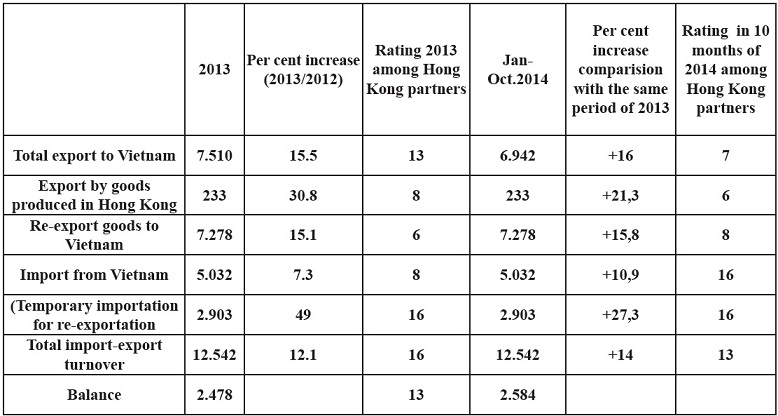
Source: HKTDC
The statistics show that Hong Kong's total exports and imports of goods from Hong Kong to Vietnam in the first ten months of 2014 reached US $ 12.53 billion, up 16% compared to the same period last year. The total export turnover of Hong Kong to Vietnam from January to October 2014 (including re-exports) was $ 6.9 billion up 10.8% compared to the same period last year. In which exports goods originating from Hong Kong reached 233 million, up 21.3% compared to the same period last year. Hong Kong's import turnover from Vietnam was 5.03 billion, up 10.9% compared to the same period last year. Kim nghach imports to exports reached USD 2.9 billion increased 27.3% compared to the same period last year.
2. FDI from Hong Kong to Vietnam in 11 months of 2014
Investment FDI into Vietnam, Hong Kong's first 11 months of 2014, Hong Kong had 90 new projects, total registered capital and capital increase reach to USD1.698 billion, ranking No.4th among 60 countries and regions have invested in Vietnam in first 11 months of 2014.
Until 11/20/2014, Hong Kong has 860 FDI projects in Vietnam, the total registered capital and capital increase reach to USD 14.15 billion, ranking No.6th among 101 countries and regions have invested FDI in Vietnam.
PART III
TOURISM IN PHU QUOC ISLAND
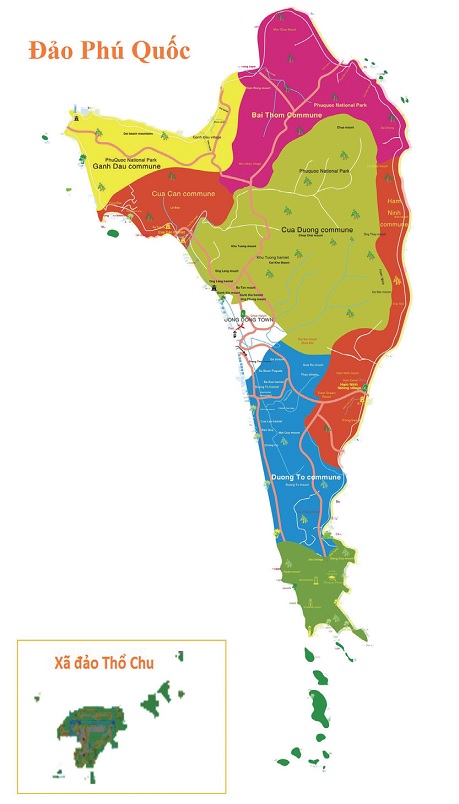
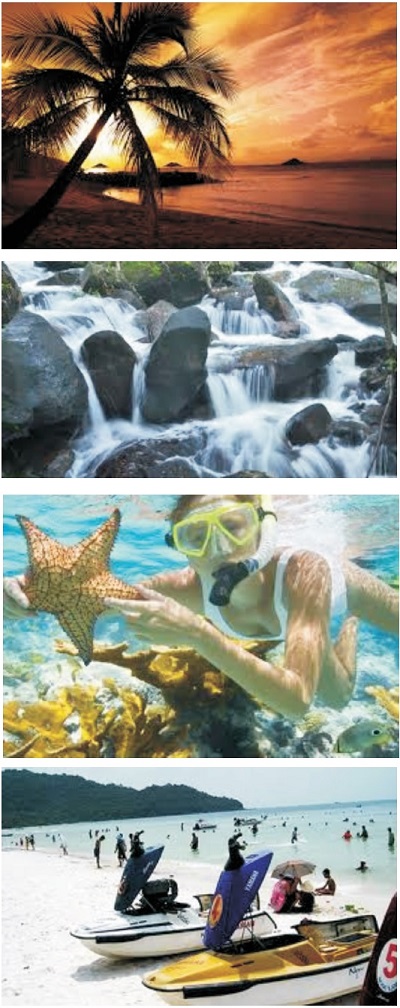
Phu Quoc Island is the largest island district of Vietnam, located in the Gulf of Thailand in the province of Kien Giang. Duong Dong Town, the capital of the island 120km from Rach Gia City and 45km from Ha Tien. It offers Phu Quoc Airport. Phu Quoc Island in the Gulf of Thailand, South-West of Vietnam, Phu Quoc stretches from latitude: 9 ° 53'den 28'do 10 ° north latitude and longitude: 103 ° 104 ° 49'den 05'do east longitude. The highest point to 603 m (Mountain of God). Gentle natural terrain running from south to north with 99 hills. Part of the shallow seas around the island at depths less than 10 m. However, clusters of An Thoi islands are separated from that part of the southern tip of the island of Phu Quoc by a strait with a depth of more than 60 m.
Due to the location characteristics of Phu Quoc Island is located in the lower latitudes to fall into the Gulf of Thailand, wrapped around the sea, the weather was cool monsoon nature. Climate split two seasons, the dry season starts from November to April lunar lunar year after the rainy season begins from May to October lunar calendar follows the lunar year.
Phu Quoc Island consists of 36 islands, of which the largest Phu Quoc Island has an area of 573km², 50km long, widest point (north island) 25km.
Gentle natural terrain running from south to north hilly. There Phu Quoc National Park, an area 31.422ha, including forest 12.794ha. Biota has 929 plants, 89 species of hard coral, 19 species of soft corals, 62 species of seaweed ...
Phu Quoc island was named by the rich jewel so blessed and rich tourism potential, a strange land. The island has many beautiful beaches such as school yards and yards Khem, Ganh Oil, Melaleuca ditches, canals mussel. Guests can swim, shower stream, climbing, hang on, in the woods ...
Famous specialty of Phu Quoc fish sauce, sweet flavor, fragrance made from a special type of anchovy, have high protein levels (above 25 ° C), the annual production of about 6 million liters. Bien Phu Quoc are many types of seafood you like prawns, mackerel, pomfret, silver fish cheeks, fish anthem ...
Phu Quoc Airport
Phu Quoc An Thoi port, as Hon Thom, is the entrance of vessels in domestic and international exchange of goods. Phu Quoc Island is home to many historical sites such as the base of the hero Nguyen Trung Truc, memorabilia of King Gia Long in the years drifted to the island (late 18th century), Phu Quoc prison ...
Today, the system of roads on the island is growing rapidly, which is next to the passenger transport route from the mainland to the island by both air and maritime very convenient so you can rest assured to also like walking on the island without encountering any obstacles. Currently online service Vietnamairline City. HCMC - Phu Quoc (1 hour), Rach Gia - Phu Quoc (40 minutes). There are also hydrofoils Rach Gia - Phu Quoc (lost 2h35 ').
Phu Quoc Island Specialty
Visitors to Phu Quoc, in addition to sightseeing, rest, recreation is an opportunity to enjoy local delicacies in this remote island ...
Alcohol is considered a specialty Sim in Phu Quoc by special taste delicious. Wine is made from fruit sim forests, mainly in the soaking method manually. Wine Sim yellow during very nice, with a distinct aroma of forest fruit sim, while drinking sweet taste acrid mix. Wine sim makes digestion, aches of the evidence in the elderly.
In Phu Quoc has a lot of hills sim distributed throughout the island, most of the protection forest Ham Ninh, Duong, Door Ocean. Almost myrtle flower and fruit year round, but in the process, said the weather service sim in the spring for the best quality fruit, honey and more is the best material to make wine sim there are tasty and nutritious.
Minutes tomorrow oysters have very unique shape is triangular, palm-sized adults, plug deep into the seabed. Minutes tomorrow Thoi sea life, the southernmost island. Bring on the processing of delicacies with different flavors such as sweet and sour apricot border, border tomorrow steamed, pan cook tomorrow border, border tomorrow baked rolls with vegetables, fruit embedded modules border tomorrow. Meat border tomorrow so sweet, tasty, especially near its large, round copper coins, very white layer between thit.Tat two dishes from the border tomorrow rare type are usually only used for entertaining guests from afar when visiting the island. Herring salad is Phu Quoc seafood specialties that any tourists come here to enjoy them.
Herring is a fish like tomorrow but larger fish, with bluish skin, bone eat very little fat. To make salad, fish are brought peeled and sliced meats take part, then re lemon served with vegetables and coconut forests as brooch, shoots hammer, candles, metal can ... dotted with peanut sauce. Interestingly, when this dish, roll to roll swept the individual to do in Phu Quoc for bread here is not too long nor too thin. For easy rolling wheel without being sticky when wet, it must be embedded through the coconut cake. The main fat in coconut cake made without fear of being soft sticky. When relish, sweet and fragrant taste of fat coconut will increase the attractiveness of the dish.
Along the coastal countries where we seem to have a fish sauce. But still the most popular Phu Quoc fish sauce for fish sauce here have very high protein helped calm sweetness and aromatic smell sexy anchovies. The type of anchovy catch from the sea Phu Quoc like anchovies chalk pencil, charcoal anchovies, anchovy pepper stripes. Salted anchovies brought in proportion secret. Fish and salt packs after mix brought in wooden casks until fish biodegradable, so as long as delicious. Atrial fish sauce or fish sauce called aggregate, in a clean, sterile fish through the annealing process. Phu Quoc fish sauce pure dark colored wings indirectly, in the characteristic aroma and taste so salty and sweet fat protein from fish to create a special product of the island. Quality sauce is appreciated across the aroma that people feel from the food seasoning, fried, marinated or sauce. Phu Quoc fish sauce is a freebie for meaningful ones exciting trip of you on this beautiful island. (Source: www.vnnavi.com).
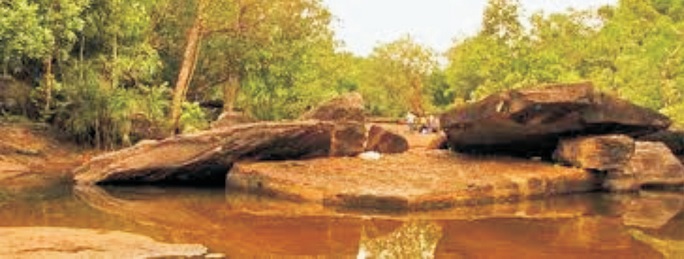
Projects calling for investment:
a-The complex is CASINO.
Orientation, goal: to build a complex including casino operations, tourism, luxury resort, commercial, ... with a total cost estimated at $ 5 billion.b- Dat Do Tourist Port nose.
Currently consulting unit Nikken Sekkei (Japan) was founded Urban zoning An Thoi, in which the nose Dat orientation is the largest commercial focus Thoi; There are commercial buildings, hotels, duty free area; the traffic junction between waterways and roads.c- Waste treatment system at Duong Dong of Cua Duong commune.
Location: in Cua Duong commune ; Size: about 25 hectares.
Orientation and objectives: waste disposal for Urban Ocean East, Urban Cua Can Cua Duong commune and the surrounding area.
Source: Consulate General of the Socialist Republic of Vietnam to the Hong Kong SAR & Macau SAR
